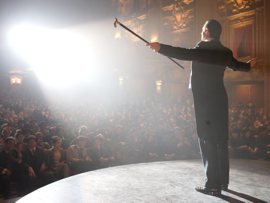Web exclusive
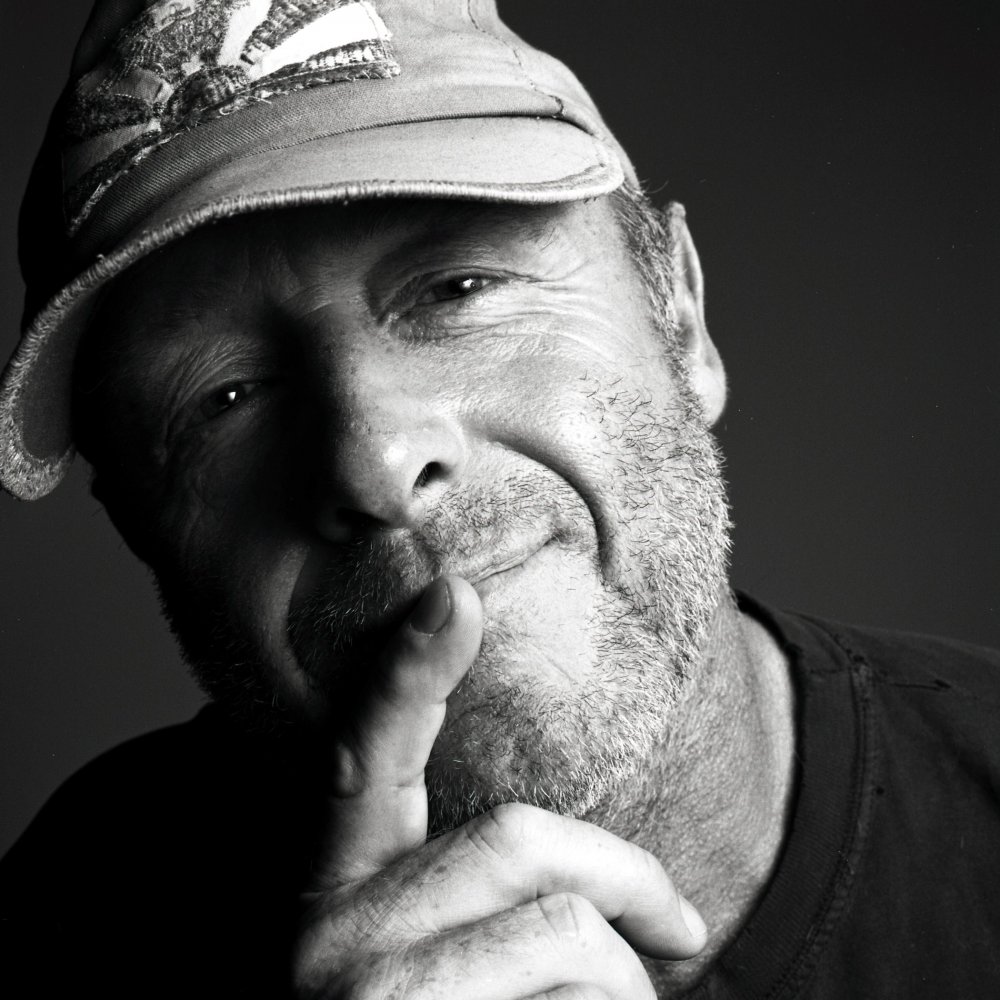
Tony Scott
The 1970 Yorkshire farmhouse psychodrama Loving Memory, both written and directed by Tony Scott, is not a film you’d associate with its maker. A touching character study, exploring themes of death, loss and memory, it has a stillness and emotional resonance absent from the work that made Scott’s name in the 1980s and beyond.
It hints at a possible alternative career map, had Scott not followed his elder brother Ridley into the worlds of advertising and then Hollywood – a future working in the British social realist mould, possessed of an alluring sense of lyricism. Only one aspect of this filmmaker lingered on: a capacity for great visual beauty and a sensuous mastery of light. Scott had an innate visual genius that would soon be focused on aircraft and weaponry, movie stars and scantily clad models rather than the tumbledown cottages and collieries of his birthplace. One suspects the Tony Scott who directed Top Gun and Déjà Vu would have found this alternative future just a little bit dull.
Scott’s was the archetypal story of the Englishman escaping the stuffiness of a class-ridden England to make it big (or in his words, “humungous”) in America, acquiring fame, wealth and notoriety in the process. The art student from North Shields became one of the top-grossing film directors of all time.
As a young man he had studied painting at Sunderland art school, where he was head of the film society, screening films by Polanski, Roeg, Bertolucci and Fellini, all notable stylists, dealing in heightened realities. After making One of the Missing, an adaptation of an Ambrose Bierce story, and Loving Memory at the Royal College of Art in London, he joined Ridley Scott Associates, which had been formed in 1973, going on to direct hundreds of adverts, entering a world he described in interviews with a tone poem – “girls, jeans and rock ’n’ roll”. His brother tempted him away from dreams of painting and documentary with an unapologetic promise of riches. “Now he drives a Ferrari Testarossa”, said Ridley years later, proudly.
-
A young Tony Scott (with cigar) on the set of 1974’s Loving Memory. Browse this gallery for more images of Scott at work.
-
With Tom Cruise on Top Gun (1986)
-
With Tom Cruise and Kelly McGillis on the set of Top Gun (1986)
-
Scott directing Tom Cruise in Days of Thunder (1990)
-
Scott with Will Smith on the set of Enemy of the State (1998)
-
Scott directing Denzel Washington in Man on Fire (2004)
-
Scott directing Mickey Rourke in Domino (2006)
2. Drugs of the eye
“Nine-camera Tony, he’s a real artist.”
—Denzel Washington
In Scott’s work the eye was prioritised above all else. “I’m preoccupied by the visual”, he said. If cinema is primarily a visual art then Scott demands to be recognised as a visionary director in the most literal sense of that term – think of the way that he filmed fire, for instance, or the way light reflects on the hood of a vehicle or a human face. As David Bowie, star of Scott’s first American film The Hunger, observed, “the visual was nearly all of what he was doing. He did not have great ideas about the through-line of the story. It was about moving one interesting visual against another.”
Scott’s camera mimicked the gaze of the consumer. Vehicles, weapons, bodies and buildings were all equalised as objects of aestheticism. The advertiser was not distinguished from the filmmaker in his work. His aim was not so much eye candy as drugs for the eye. This is what renders his films so re-watchable and places them entirely in the present moment of consumption. One leaves a typical Scott film emotionally vacant, literally feeling used and over-stimulated. Yet close your eyes and you can remember colour and movement, the sensory traces of a heightened experience.
“Everything is played against light. Everything revolves around the sun”, said Chris Seagers, his production designer for Man on Fire. It’s possible to register a change of the light in Scott’s work, from soft light to hard light, from the pillowed diffusion of Days of Thunder and Beverley Hills Cop 2 to the aggressive whiteout of Man on Fire and Domino.
The unexplained light that drenched his films led Pauline Kael to refer to him as “Tony ‘make it glow’ Scott”. She meant it as criticism, but it’s possible to view this as a grudging acceptance of the incandescent, dazzling aspects of his work. Like another important director of the 1980s, David Lynch, he was a painter who saw the possibilities of the frame as a canvas on which to apply a distinctive palette. “I still think like a painter”, he said in the 1990s.

Domino (2005)
A great influence was his favourite artist, Robert Rauschenberg, whose vivid colours and bleached, mesmerising evocation of sunlight can be seen referenced in Scott’s later work. His primary colours were sunset orange, green, ochre, mustard, chrome and cobalt, the powder blue of the American sky.
Scott was a technical virtuoso, implementing a dizzying array of techniques including time lapse, shooting at six frames a second and using high-speed film. From Man on Fire onwards he utilised cross-processing to heighten colour, and photo-chemically manipulated his film stock. This experimentation produced what he called the “mistakes that inspire… the magic that comes from accidents.”
The result was nothing less than a new cinematic language, with blurred frames, figures and faces smearing trails across the screen. Man on Fire and Domino, particularly, pulse with a feverish, livid energy, as if the film stock has been doused in accelerant then ignited. His films didn’t just inspire imitative directors; they inspired technicians, lighting crews and directors of photography. One can only concede to his brother Ridley’s proud contention that he was “the most cutting-edge, technically advanced filmmaker in the world.”
He was interested in propulsion and momentum. His films are at their best when the script is reduced to a linear forward movement, as in the cat-and-mouse pursuit of Enemy of the State, the mounting back and forth tension of Crimson Tide or the revenge tale of Man on Fire.
When the scripts became more complicated and non-linear – Domino, Spy Game, The Taking of Pelham 123 – they had a tendency to fall apart as narratives. Scott did not concentrate on set pieces so much as approach an entire film with a tonality that extended to cutaways and connecting shots, all of which were dealt with at the same register of glossy enormity, so the opening of a car door exuded the same visual verve and finesse as any larger action scene.
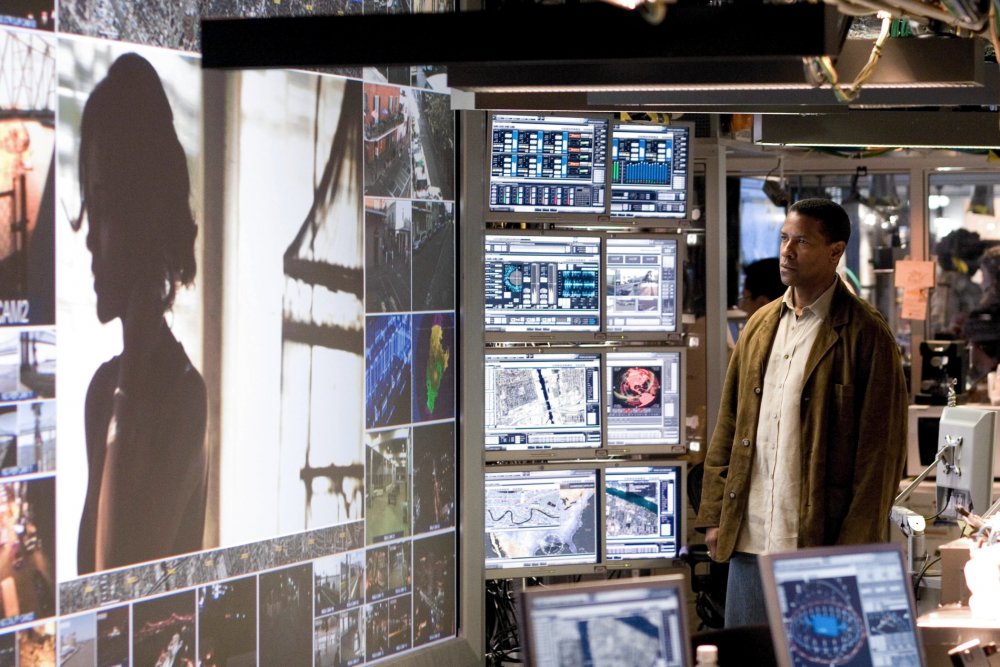
Déjà Vu (2006)
Rather than seeing a film as an expression of a singular idea or set of ideas, Scott viewed it as a choice-making process, with the pragmatism and troubleshooting energy of the ad-man. This sense of expediency often shaded into the preposterous. In many of his films, credulity is stretched, and the veracity of the narrative is compromised by the desire for aesthetic excitement.
For example, the fact that Domino Harvey reportedly never killed anyone is not allowed to get in the way of many bloodbaths in the film Domino. Scott deals with the facts by staging hypothetical shootouts and rewinding the action scenes. In The Fan, the fact that rain halts play in a baseball game is blithely ignored in order for the climax to take place in a dramatic torrential downpour.
Scott was fascinated with what he called ‘real toys’, perhaps because of the success of Top Gun, and also because of the opportunity they gave to create awe-inducing photography. His films teem with machinery, technology, hardware, arks of weaponry, convoys of hummers, jeeps and black SUVs, fighter jets, submarines and trains. His films are star vehicles in which vehicles are often the true star.
They reinvented the base genres of 70s pulp cinema, what he termed the ‘Charles Bronson Death Wish genre’, submarine movies, runaway-train movies. He also made the films that came to epitomise the new genres of the 1980s and 90s – the action comedy, the buddy movie, the techno-thriller. Echoes of his work can be seen in the balletic carnage of John Woo, the aestheticised dream worlds of manga, the ribald gloss of Michael Bay, the vivid populism of Kathryn Bigelow and the crunchy police stories of David Ayer, not to mention the films of Quentin Tarantino and the perverse action movies of Miike Takeshi. Rock Stars’ console game Max Payne 3 is an unashamed tribute to Man on Fire, down to the use of onscreen subtitles, garish Hawaiian shirts and rust-coloured sunsets.
3. The ad-man cometh

Catherine Deneuve and David Bowie in The Hunger (1983)
“I love it… fuck yeah.”
—Tony Scott
The traditional line on Tony Scott is that he was an adman who became a filmmaker. In reality, he never stopped being an adman and steadfastly refused to differentiate between filmmaking as commerce and filmmaking as art.
The usual criticism, that the Scott brothers’ work resembles an advert or a music video, has it the wrong way round. By the mid 80s the majority of adverts and music videos, not to say a large number of mainstream films, resembled the work of the Scott brothers. Tony Scott was among the first directors to, in his words, “take the video and commercial world to movies.” Devices such as the rolling cameras used in Top Gun’s breathtaking dog-fight sequences had never been utilised in a feature films before. In his later films, it’s as if the experimental approach directors such as David Fincher reserve for their title sequences had leaked into the language of the movie itself.
Scott’s Hollywood calling cards were his stylish and vacant soft-porn horror film The Hunger, a commercial and critical disaster that went on to become a cult movie for the burgeoning goth scene, and a commercial for Saab, which showed a fighter jet chasing a car and highlighted Scott’s talent for aestheticising vehicles and technology. These intimations of talent were picked up by the hyper macho and legendarily debauched producer Don Simpson, the brains behind Flashdance and an expert at merciless zeitgeist extortion (who once proclaimed “I love trash. I am trash”) and his more presentable partner Jerry Bruckheimer.
Scott, Simpson and Bruckheimer were bored by the aesthetics of American cinema.
Their battle cry on the Top Gun set was “we will sublimate [sic] the audience.” Sublimation and suggestion – to stir in an audience the desire for the object (human or otherwise) being presented – were the tools of television advertising. These skills of arousal and stimulation helped Scott develop a unique cinematic style. The action scenes in Top Gun express a dream-like fantasy of flight that has lost none of its power to thrill and exhilarate.
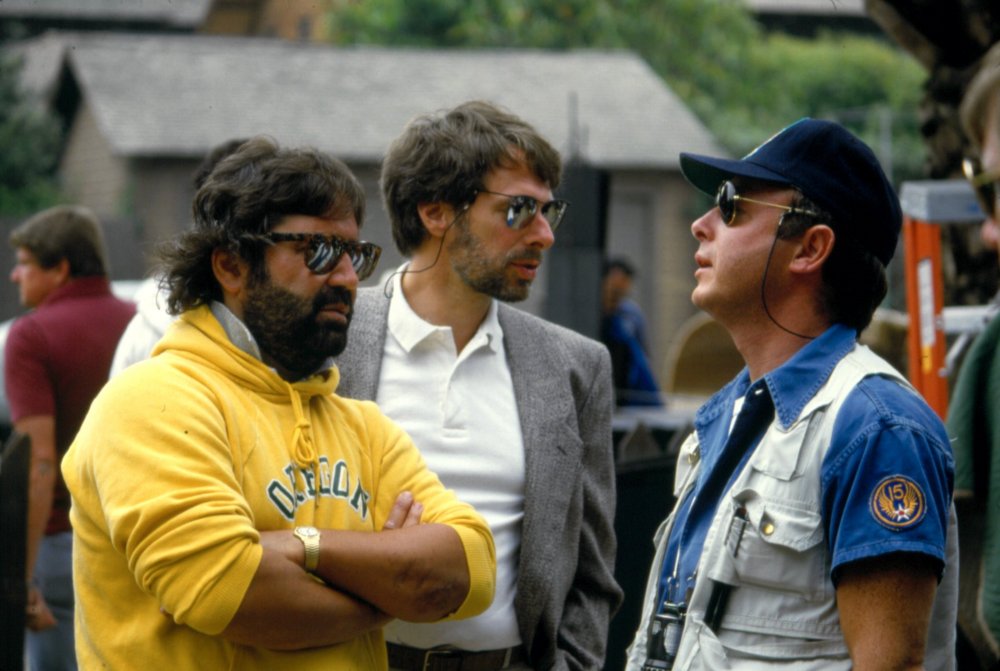
Scott (in cap) with Top Gun’s producers Don Simpson (left) and Jerry Bruckheimer
His producers were well ahead of the game in their use of cross-promotion, their films being multi-platform affairs with spin-off songs and music videos. This was cinema as advertising as military operation – the aim being full-spectrum dominance. Well ahead of their time in the identification and exploitation of mass demographics, their folk angels were ‘Mom and pop in Oklahoma’ – the projected audience for their films, unsophisticated, highly suggestible and apparently desperate for authentically brain-dead entertainment.
The style Scott came up with to render their vision was one which demanded, and elicited, a Pavlovian audience response. The fighter jets, like the baby-oiled bodies of their pilots, were shot to be salivated over – double whoppers with (processed) cheese. Scott’s trademark colour-palette, its deep red and sunset orange, unavoidably brought to mind the big mac, the ketchup and mustard on a hot dog. The film sometimes seemed to mimic the colour and texture of popcorn itself.
4. Plunging the depths
“Maybe it’s not as bad as it looks.”
[Pause] “It is.”
—Crimson Tide
As a filmmaker, Tony Scott came in for a lot of criticism in his lifetime. It’s not everyone whose work gets described as “the filmic equivalent of a hate crime”, as Desson Thomson of the Washington Post said of The Last Boy Scout.
Even his most ardent admirers, who consider his work close to a definition of pure cinema, can’t help but admit that much of this criticism was justified. Whether it was the advertising world or Hollywood that taught him the lesson, many of Scott’s films aimed directly for the lowest common denominator and left no depth of inanity un-plunged in the process. While our senses are enriched, our sensibilities are often degraded. His films don’t so much insult the intelligence of the audience as assume it doesn’t exist in the first place.

Man on Fire (2004)
On occasion his films reach an absolute zero-level of moral redundancy that can leave the viewer feeling genuinely unwholesome. The worst example of this is his second film for Simpson and Bruckheimer – then at the height of their powers – Beverley Hills Cop 2. The film, like many of Scott’s others, displays a remedial inconsistency of tone, full of flippancy, casual sadism and misogyny. Brutish toughness and mawkish sentimentality are primary virtues. Bathos and pathos abound. Alpha males prosper. Cuckolds, failures and fat guys are treated without mercy. A favourite trick was to surround an airbrushed star with a coterie of sweaty failures.
Female characterisation was minimal, and often you’re made to wonder why they didn’t go the whole hog and give top billing to the ‘ass doubles’ – the real female stars. The majority of his work displays a relentlessly juvenile sexuality. It’s hard not to sense the influence of Don Simpson, particularly, in these deprivations, cleaving as they do to his reputed lifestyle preferences and general outlook. Scott himself admitted that the beach volleyball scenes in Top Gun were purely “soft porn”. His camera leered frankly at male and female alike.
And if flesh is leered at in Scott’s work, then so is everything else. There is a sense of polymorphous perversity, a fetishism extended to vehicles and weaponry. The eye is that of the advertiser, desirous and acquisitive. Often the storyline hints at a perverse angle that is never explored but still seems visually present – a love affair between a little girl and her bodyguard, between an ATF man and a dead girl, between two fighter pilots. Yet these angles are never dignified as subtexts. The films remain necessarily shallow, each scene an excuse for a new set up.
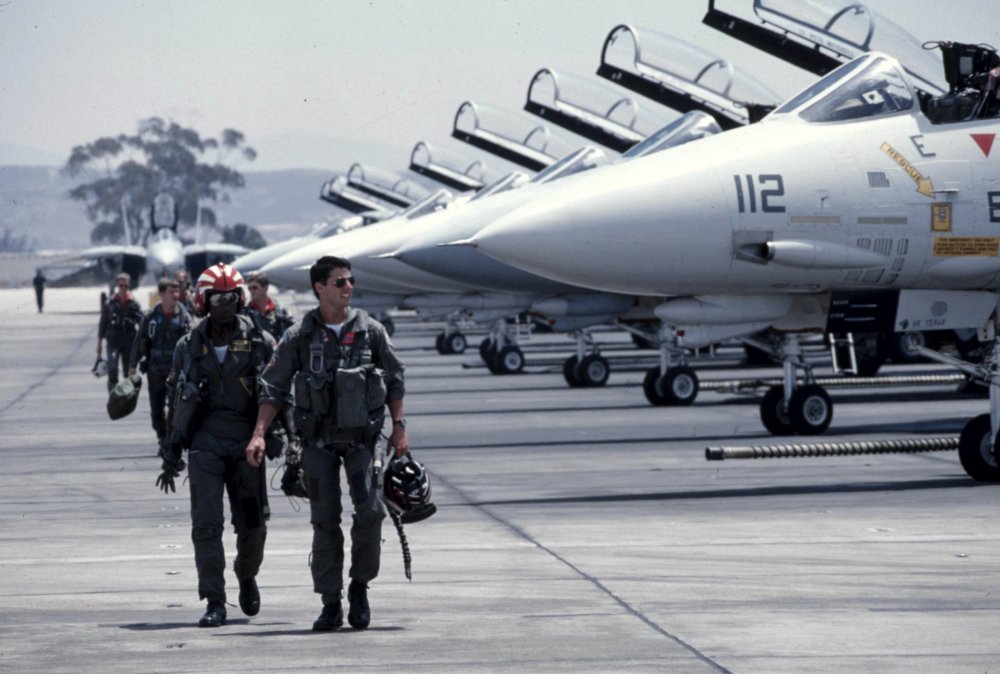
Top Gun (1987)
Then there was the traditional Hollywood theme of morally justifiable homicide. A prime example of this is the ‘humorous’ torture scene in Man on Fire. Scott, entirely unabashed, admitted he thought the best way of handling such a scene was to “play it for laughs”, using distancing techniques like cheerful music and casting a quirky actor as the victim, thus “making it watchable”. The morality of this approach remained unexplored. Yet any amorality in his films seems not to extend from personal cynicism or existentialism. If anything, it seemed to derive from naivety.
There were of course political reasons why Scott came in for flak. Leaving aside the unapologetic loads-a-money capitalism, all fast cars, cigars, and trophy wives, there was a sense of a filmmaker uncomfortably close to the establishment. Scott directed adverts for the military, and indeed Top Gun served as a supreme recruitment video.
One of its stars, Michael Ironside, remembers being menaced in a bar by two disgruntled air-force cadets who had signed up because of the film and since discovered that life in the military wasn’t quite all that Top Gun had been made it out to be. The film was blatant propaganda, as it had to be if it was ever going to get made in the first place.
Militarism wasn’t just an aesthetic for Scott. It was a way of working. “I’m a good general”, he said. He shared with his elder brother Ridley a sense of film as military operation: “I’m like Patton”. Top Gun became the cinematic cultural equivalent of Bruce Springsteen’s song ‘Born in the USA’. The Boss’s anthem for forgotten Vietnam vets may have been misappropriated by the Reaganite right, but Tony Scott had scored a direct hit. The film was to define the rest of his career.
A queasy counter-revolutionary note was struck again at the conclusion of Crimson Tide, when Gene Hackman’s nuke-happy submarine commander, who for the whole film has been ready to vaporise Russia any second now, is entirely absolved of wrongdoing by the military and positioned as the film’s hero – the message being, he’s basically a good guy if a little old-school.
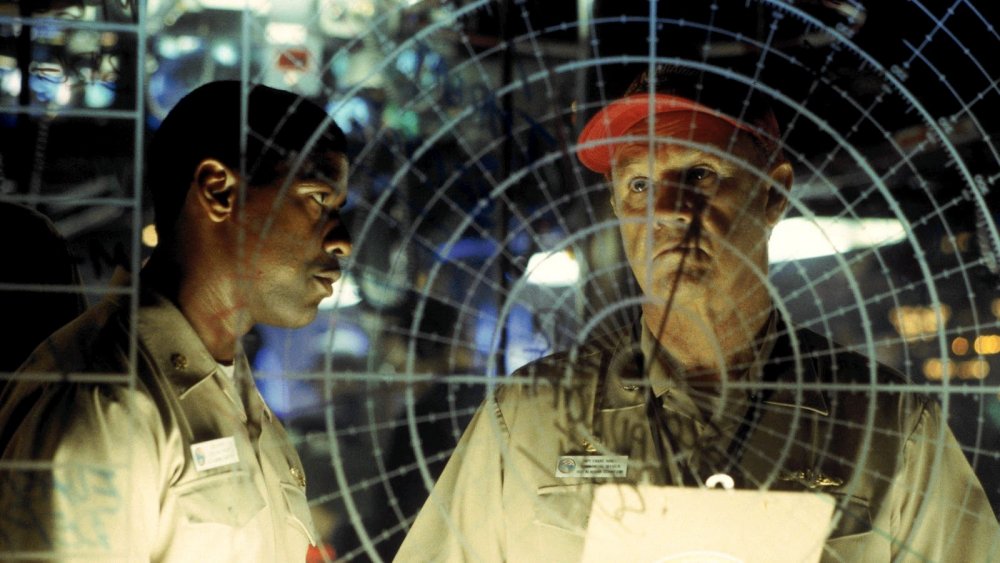
Crimson Tide (1995)
Likewise, the futurist Kafkaesque nightmare proposed in Enemy of the State ends with a forgiving note of right-wing individualism from Larry King (in one example of Scott’s trademark blurring of the cinematic with the televisual) who justifies the need for surveillance technology to combat terrorism before asserting, “You have no right to come into my home!”
On top of this there was his facile use of the ‘foreign’, highlighted in the faceless, doomed Russians of Top Gun, the Russians relegated to ranting TV vox-pops in Crimson Tide, and the puerile exoticism of Man on Fire, where Mexicans are either murderous, corrupt, naive or comic, and end up being demeaned, tortured and killed.
Once again, this jingoism seems to stem from a naivety on Scott’s part, an inability to see that ‘pure entertainment’ might have any serious ideological connotation in the first place. It’s tempting to dismiss these concerns – the films by and large are such gormless fun that the idea of taking them seriously on any ideological level is ridiculous.
Still, this cavalier recklessness can leave a nasty taste in the mouth. One gets the sense that Scott didn’t care as long as it gave him the chance to shoot footage of a real nuclear submarine or fighter jet. “‘Tony Scott’ gets you in” said a collaborator on Man on Fire, discussing his director’s ability to gain entry to Mexico City’s criminal investigations bureau. The upside and probable aim of his biddable approach was access. The visual trumped the ethical every time.
5. Mainlining entertainment
Justified criticism aside, you would have to be spectacularly humourless as well as disinterested in film aesthetics not to find anything to appreciate or admire in Scott’s filmography. His worst films aren’t ‘so bad they’re good’; they’re at once incredibly good and incredibly bad.
His impatience renders his films re-watchable. The swiftness of the editing and the depth of his visuals give them a compulsive, restless quality, as if Scott’s aversion to plot detail allowed him more powerfully to create a woozy sense of sensory immersion, like watching a stimulant-fuelled dream or accessing a drug memory.
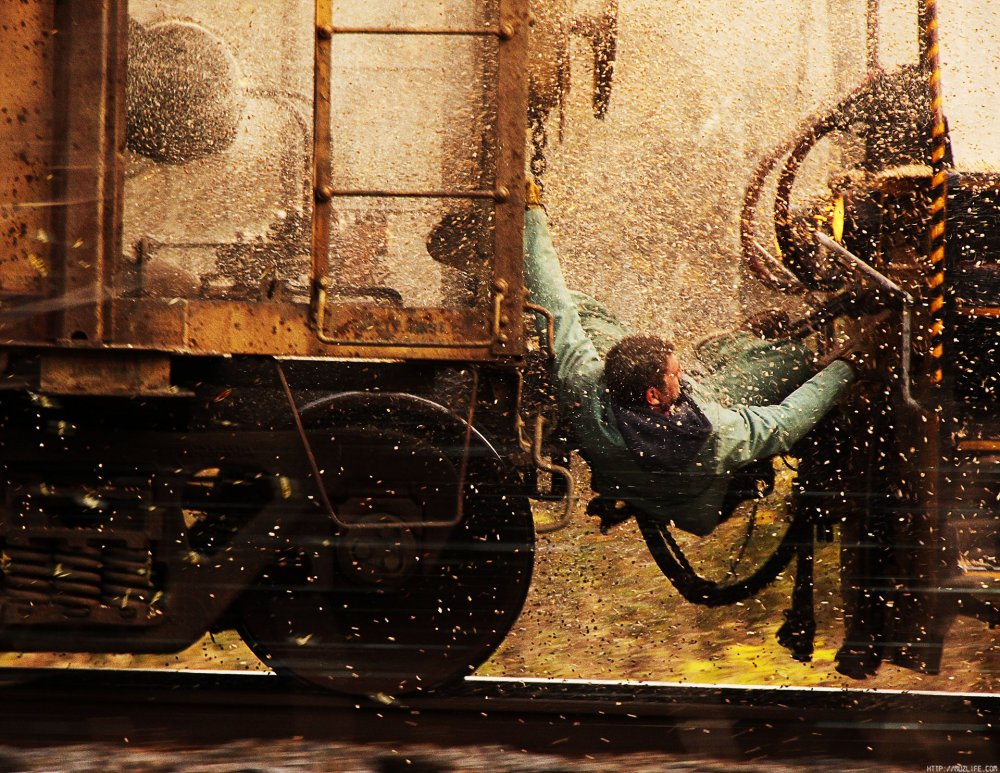
Unstoppable (2010)
His addiction to the instantaneous is what draws you back to his films and makes them so immediate and entertaining. There are few views of his work that display more clarity and simplicity than his own. “I think it’s the most purist form of escapism,” he said. “You don’t have to concentrate too hard. You’re sort of spoon-fed your entertainment but it is fun. It mainlines entertainment.”
He was a filmmaker completely willing to sacrifice continuity. Testament to this is the illogical shifts in location and weather that mark his work. As he noted of Unstoppable, the runaway train seems to traverse an unlikely range of territories and meteorological conditions. “We go from full green to snow,” he admitted. “No-one seems to have noticed yet!”
Scott’s work hits you in the eyes, the guts, the balls. These are simple broad emotions: triumph, vengeance, love, tabloid melodrama. You can’t help but think Sam Fuller would have approved. He had the common touch, and part of the enduring and wide popularity of his work stemmed from his willingness to play the low notes.
6. The legend
“Who’d you have to fuck to get this job?”
“Me.”
—The Taking of Pelham 123
The high-concept scripts and maximalist approach required a different breed of filmmaker. Rather than the beard-stroking creative, they needed the outdoors type, someone of great stamina and enthusiasm. It’s not every artist who can manage to shoot a film on a train at 70 miles an hour, with circling helicopters providing tracking shots from long-lens cameras, and still maintain such a rigorous aesthetic. The sense one gets is of a man dedicated to dauntingly hard work, up story-boarding in the morning, ever present on the set in the early hours, amongst his beloved “cold breath and name tags.”
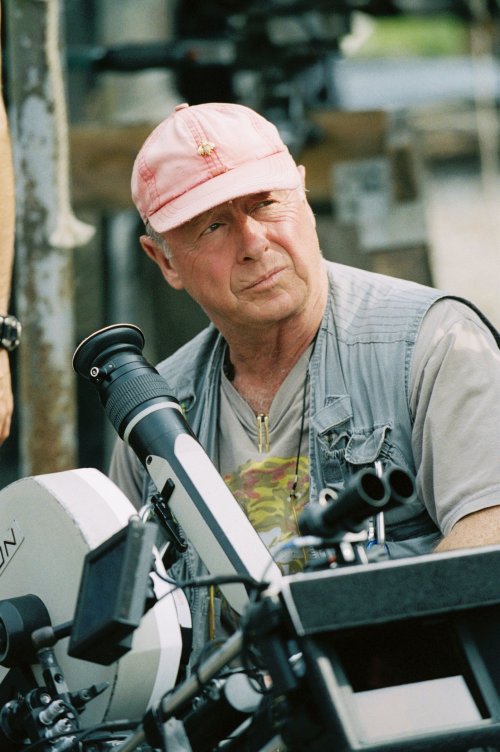
His ebullience was matched by his sensitivity. The critical response to his work seems to have been of some concern to him, and a rueful smile would play around his lips as he described being “hammered by the press. England destroyed me, Hollywood destroyed me.” He was a keen rock climber, taking time between movies to scale the north walls of the Alps, or making three-day ascents of 4,000 feet up the side of El Gigante.
This penchant for dangerous locations and dangerous stunts, his natural machismo, fed into his films. He liked getting into scrapes. He was implicitly trusted by studios to take his films and their stars to the edge of danger. “I know how to do it,” he asserted. For him, filmmaking was an extreme sport. In such circumstances Scott was perennially reliable, a safe pair of hands. “It’s a good excitement,” he said, “a good fear, and I’m constructed out of that fear and that excitement.”
Scott was in re-ascension at the time of his death, and his work had notably progressed, approaching a rough and ready humanity, with an emphasis on real-life blue-collar characters in keeping with the recession era. This was a further example of his innate commercial instincts.
His career seemed to be in acceleration. As he himself said, the “leaps forward” in terms of his own style were getting greater between films. He had a new lease of life artistically, had shifted to a higher gear and embraced his destiny as a supreme populist. For admirers of his cinema, his loss is a great loss. There is a palpable sense of disappointment at not being able to see his next film, as if the senses of the movie-going public are already suffering from withdrawal.
In the May 2013 issue of Sight & Sound
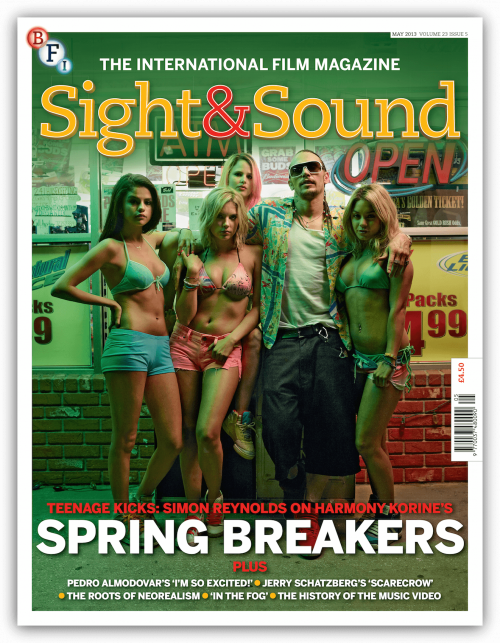
You only live once
Harmony Korine’s Spring Breakers, plunging us into the distinctly American canrival that is Spring Break, is marked by a steadfast refusal to judge its characters’ antics. So it is just a gun-crazy Girls Gone Wild or is there something more in the mix? By Simon Reynolds.
-
The Digital Edition and Archive quick link
Log in here to your digital edition and archive subscription, take a look at the packages on offer and buy a subscription.




